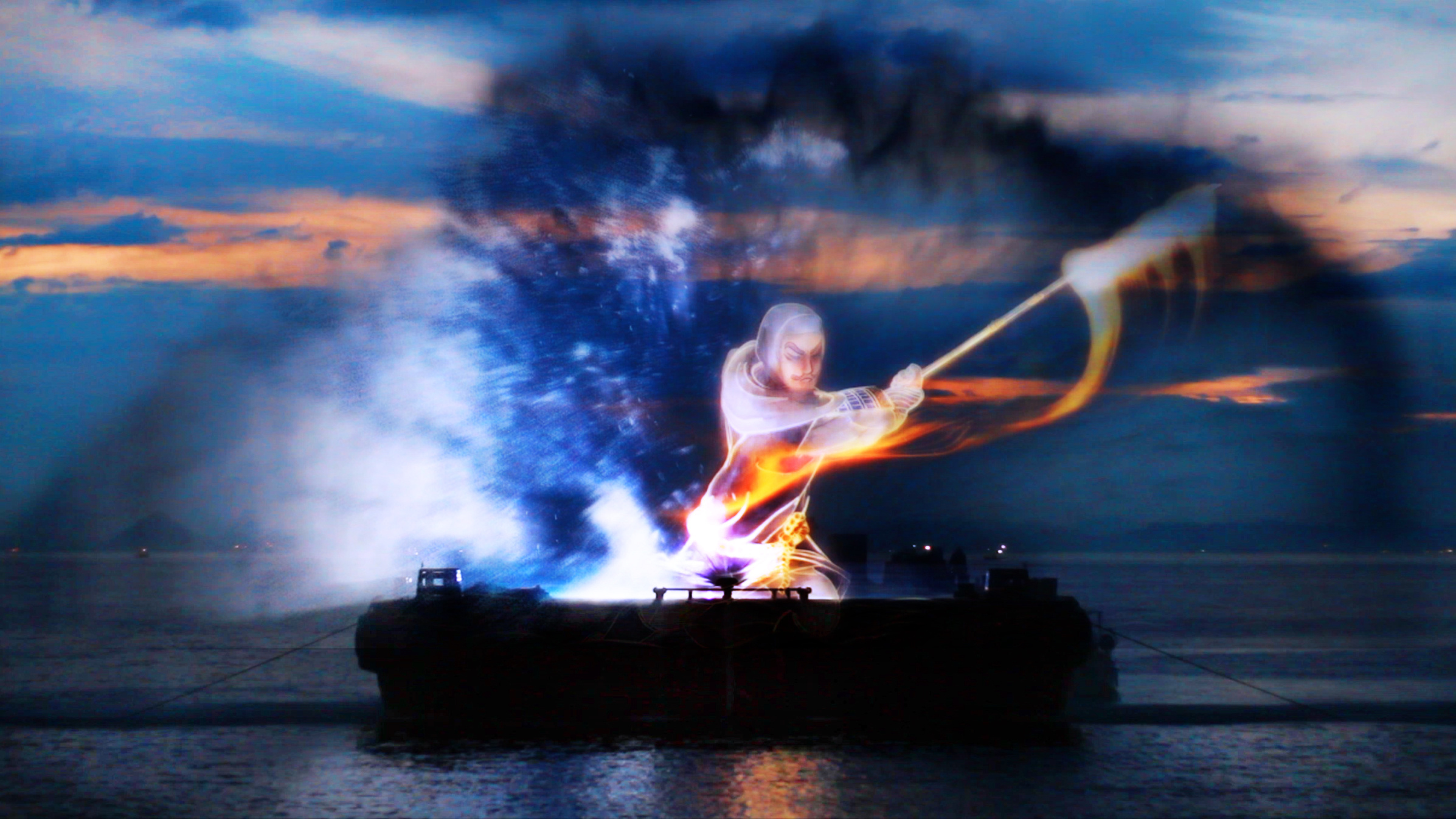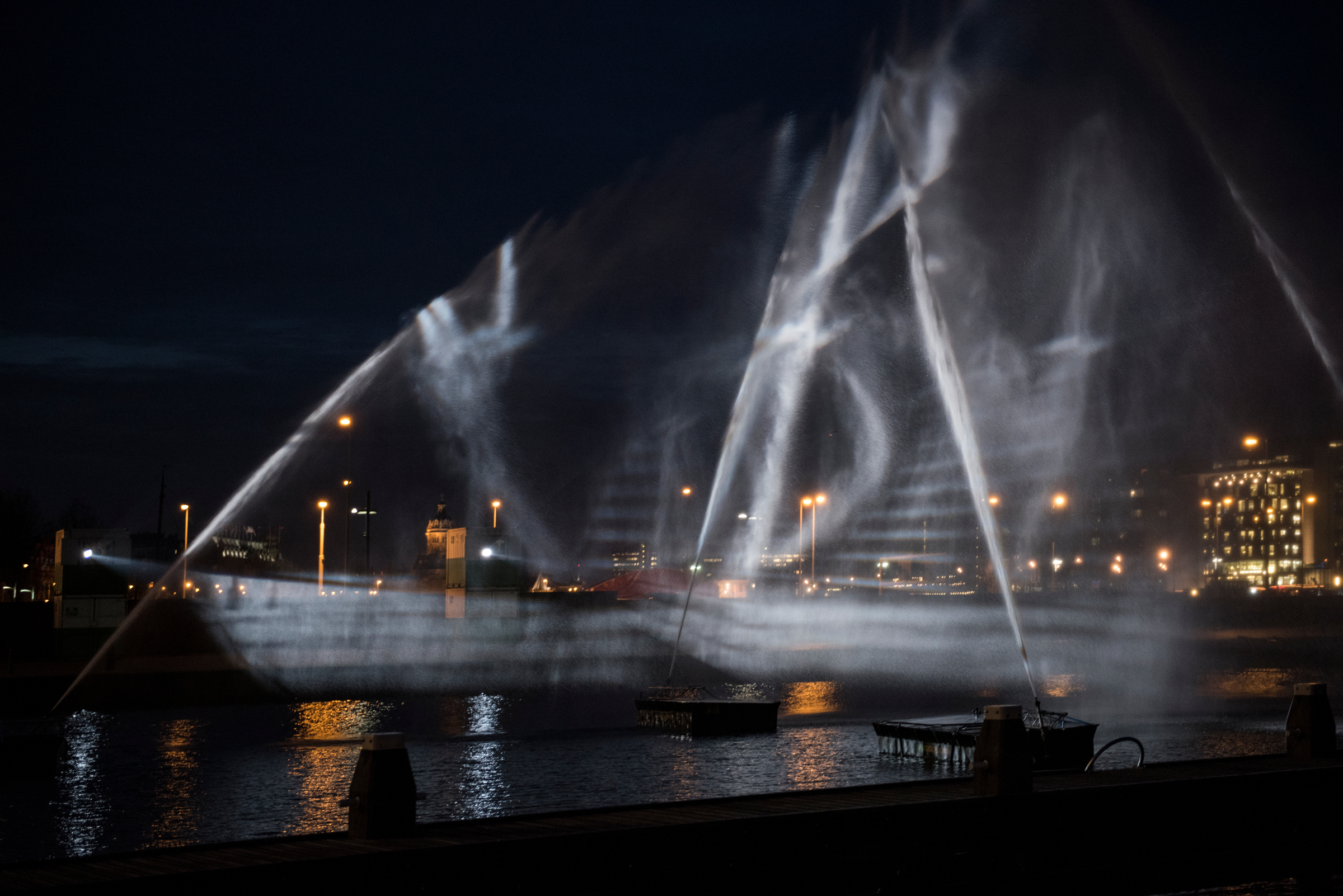Erin Go Bragh
A NIGHTTIME SPECTACULAR FEATURING THE Story of Ireland
Creative Lead
A one minute promotional video for Erin Go Bragh
The Show
Set at the cliffs of Moher in County Clare, Ireland, Erin Go Bragh is an Irish spectacular unlike anything you’ve ever seen. The show uses cutting edge projection technology, lights, aqua sets, and fireworks without harming the natural beauty of the site. Guests depart from Galway and have a full-day excursion to the Aran Islands. They sail around the various islands and cliffs within the Galway Bay region and end their day at the Cliffs of Moher. They will experience Erin Go Bragh while onboard.
The Cliffs of Moher
"A LOOK BACK IN TIME. A VIEW OF FOREVER."
"Step on to the edge of the world and into an awe-inspiring view that dreams are made of – at the Cliffs of Moher you will encounter nature in its wildest, purest form – see the rugged cliffs facing the mighty ocean, taste the salt air, hear the birds cry, feel the ancient rocks beneath your feet, smell the wind. Decide today to grant your highest wish to visit Ireland’s most spectacular natural wonder at the heart of the Wild Atlantic Way" – the Cliffs of Moher Visitor Experience.
The Cliffs of Moher (/ˈmoʊ(h)ər/; Irish: Aillte an Mhothair) are sea cliffs located at the southwestern edge of the Burren region in County Clare, Ireland. They run for about 14 kilometres. At their southern end, they rise 120 metres (390 ft) above the Atlantic Ocean at Hag's Head, and, eight kilometres to the north, reach their maximum height of 214 metres (702 ft) just north of O'Brien's Tower, a round stone tower near the midpoint of the cliffs, built in 1835 by Sir Cornelius O'Brien, then continue at lower heights. The cliffs take their name from an old promontory fort called Mothar or Moher, which once stood on Hag's Head, the southernmost point of the cliffed coast, now the site of Moher Tower. The writer Thomas Johnson Westroppreferred to it in 1905 as Moher Uí Ruis or Moher Uí Ruidhin. The fort still stood in 1780 and is mentioned in an account from John Lloyd's A Short Tour Of Clare (1780). It was demolished in 1808 to provide material for a lookout/telegraph tower that was intended to provide warning in case of a French invasion during the Napoleonic wars. The closest settlements are Liscannor (6 km south) and Doolin (7 km north). From the cliffs, and from atop the tower, visitors can see the Aran Islands in Galway Bay, the Maumturks and Twelve Pins mountain ranges to the north in County Galway, and Loop Head to the south. The cliffs rank amongst the most visited tourist sites in Ireland, with around 1.5 million visits per annum.
The Ships
The four ships will be small in comparison to most ocean cruise liners, with capacity around 300 passengers per ship. The ships will be named after the four regions of Ireland- Leinster, Munster, Connacht, and Ulster. The cost of each ship will be around 4 million euros to build since they will not need to be equipped with hotel rooms, pools, theatres, or other cruise amenities. Each will have a restaurant and lobby on the main deck with an additional bar on the top deck. The ship will also have various decks/balconies on all sides of the vessel for ideal viewing throughout the day and during the evening show. To encourage greener, living the ship will have low emission and energy efficient engines making it a better and greener option than current cruises/ferries in the area.
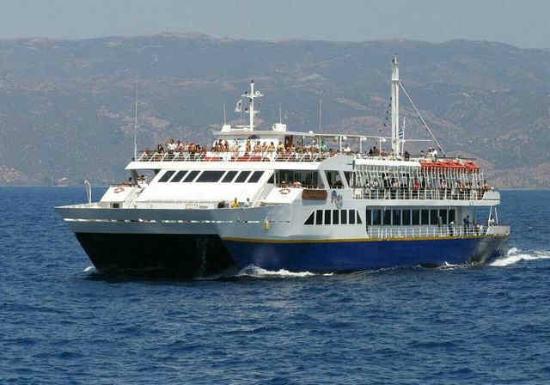
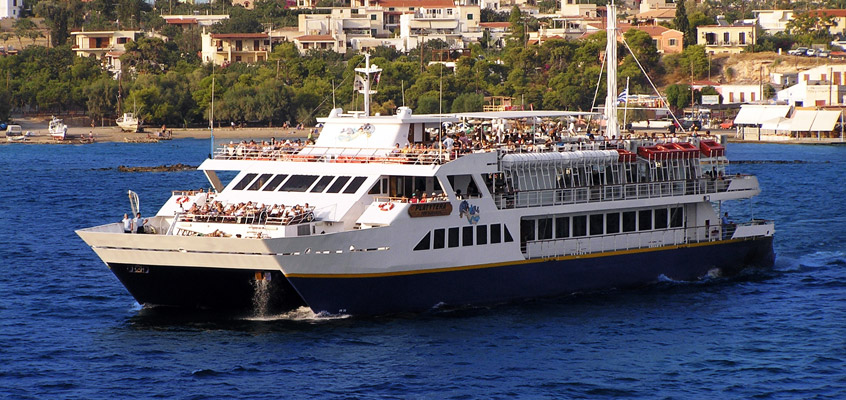
Guest Pre-Show Tour Experience
The travel route for the full day experience.. Ireland location reference below.
The County Clare Region (circled) in relation to the Republic of Ireland
The Cliffs of Moher are located just south of Galway on the Shoreline of County Clare, Ireland (see map to the left). Guests will begin their experience in Galway. The city of Galway offers plentiful transportation and lodging which makes it an ideal port for both locals and tourists. Guests will leave from Galway in one of the four ships, mentioned above, and begin their full day tour. Straight Ferries from Galway take about forty-five minutes, but the Erin Go Bragh cruise will take about two hours. There will be an onboard bar and restaurant for morning brunch and drinks. Guests will arrive at the Aran Islands at the port of Kilronan on the island of Inishmore in the Aran Islands at noon where they will be able to spend the full day. Activities include but are not limited to visiting Dún Aonghasa (a prehistoric fort on the Atlantic), the Kilmurvey House, and biking around the Island. Guests can also take a separate ferry tour from the island to visit the islands of Inishmaan and Inisheer. Guests can also choose to relax in town. The day ends at 7pm as the cruise ship leaves the island. Guests enjoy a tour around the Aran Islands as the sun sets. Guests will also have the option of having dinner an drinks on board. Within two hours, the cruise will arrive at the Cliffs of Moher just as the last of the sunlight dips behind the sea. The ships will then get into position and at 9:15 the show will start. After the show, the cruise will disembark to be back in Galway by 10:30.
Experience Erin Go Bragh
The First Irish People and Folklore
The show will open with the arrival of the Irish. Although the first of the Irish people is mixed, most of the first Irish were celts who came from Central Europe around 500 BCE. Others came from Denmark and Norway. For hundreds of years, the Vikings continued to raid Irish settlements and create new ones. The action will start out at sea. Deep emotional music builds as the first of the characters recreate the moment that man first touched Irish soil. When this happens, the landscape will erupt with excitement as lights and projections turn on. These projections will showcase what untouched Ireland would have looked like; a blank canvas for history to later fill. Guests will see the many Myths and Legends that Ireland is famous for, such as the Leprechauns, Banshees, Selkies, and the Púca. The creatures of Irish Folklore create an entertaining display over the cliffs, water, and sky.
Arrival of St. Patrick
As the show progresses we fast forward to the year 432, when Saint Patrick along with Catholicism, arrived in Ireland. We see the scene of St. Patrick meeting Dicho, lord of the soil, who would become his first convert. We will see the baptism of Dicho and the building of Ireland's first Catholic church built in the district of Magh-Inis. We will then see a glimpse of the future as people celebrate St. Patricks day throughout history.
The Attack of the Danes
In Scene three, guests see the epic violence of civil war between the early kings of Ireland. Ships enter in front of the cliffs marking the attack of the Danes. We then see the Irish people unite under the banner of Brian Boru, the last High King of Ireland. Guests see an epic battle with pyrotechnics as the Irish eventually defeat the Danes. In the battle Brian Boru is lost.
Invasion of the English
In scene four, we are taken to May 1169 when a force of individual Norman knights led by Raymond Fitzgerald landed near Bannow, County Wexford at the request of Dermot MacMurrough, the ousted King of Leinster who sought their help in regaining his kingdom. We hear war drums as they land on shore and horns sound as Henry II lands a much bigger force in Waterford ensure his continuing control over the Norman force. The Irish kings then fight and kneel, one by one, at the feet of their Norman invaders. We see trees as they are cut down around the country giving Ireland its bare landscape. All of this sets the stage for 800 years of Norman/Saxon, and later British rule over Ireland.
The Great Famine
A dark green and brown fog envelops the cliffs and somber music echos over the water. We see the fog envelop homes and crops. We see a respectful, artfully drawn animation of the effects of the fungus on the crops, and most of all, the effects of the famine on the Irish people. This animation sequence is the most difficult and moving part of the show to watch, but it is important in understanding the story of Ireland and its past. The sequence ends as hand-drawn animations of the survivors come to life, pack up their belongings, and walk towards the shore.
Irish Immigration
Irish Immigration Scene 6
The Somber music continues as projections of the people begin to leave their homes and move towards shore. Projected on the fog come ships, almost from nothing. The ships sail towards the shore where people board them. Once all are onboard, the music shifts from sad to hopeful. As the music builds, the ships sail towards the audience. On the Cliffs we see a map of the world as Irish people, many who might be ancestors of those on the boat, arrive at their new homes around the world. At that moment the projected ships seem to hit the cruise ships fading into history. The final images on the cliffs are the faces of those who left or were lost on the journey. Hopeful music builds until the last face fades.
The War for Independence
The show then transports us to 1916, the year of the easter rising. We see real footage of the event, as cries of revolution ring out. As the smoke clears from the battle, we are then introduced to our next figure, Micheal Collins. We see Irish revolutionaries coming together ralying for independence. Guests then see the events of the Irish War of Independence as music such as Óró Sé Do Bheatha Bhaile plays throughout. We then see footage of the raising of an Irish flag as the republic of Ireland is formed. Collins stands along side other famous leaders from the cause while the Cliffs turn green, white, and orange.
The Troubles
Somber music plays again as we see part of the crowd break away from Collins, and raise the flag of the IRA. A montage shows the time known as "The Troubles" playing out for almost 100 years. We also hear various speeches advocating for peace in Ireland.
A New Ireland
Uplifting music brings us into the Ireland we know today. We see various cities around Ireland and the interactions of its citizens.We then hear the national anthem of Ireland as we see images of Ireland and the joys it offers. We see soccer players, rugby players, artists, bartenders, bakers, policemen. We see the children of Ireland and are given a glimpse of Ireland's future. Music and projections fade to black as it transitions to the final scene.
Ireland Forever-Finale
Ireland forever, Scene 10
After the ending of the the National Anthem, traditional Irish music begins. The Cliffs then erupt into a finale of light, music and fireworks. This finale is the final spectacular celebration of Irish culture and its influence on the world. We see traditional Irish dancing performed on the water with the dancers shadows and images projected onto the Cliffs. Various Irish instruments join together to showcase popular Irish songs. As the music builds, Irish dancers emerge from the fog(projected) and dance over the waves. Next guests see a grand display as the rest of the fireworks erupt over the Cliffs. The show's figures from Irish history are shown one final time to recap Irelands history. Finally, the music and projections end with the eruption of the last fireworks. Guests are left to take in the beauty of the now-still Cliffs and the crashing waves of the ocean.
Technical Solutions
Rain
A projection show in a country that has on average 225 days of rain would for most be a red flag, almost enough to abandon the show entirely but if used correctly this hurtle could become a step to a better experience. In Erin Go Bragh the plentiful Irish rain would be used as a canvas for light and projection. These projections would appear 3D and would be projected up and onto the rain from show barges hidden in the darkness of the waves. These projections could be anything from ships, characters, or with enough power even false waves that can be manipulated for the benefit of the show.
(Above) Realized examples of projection on rain/water particles.
SHip Stabilization
Like many modern cruise ships these cruise ships would be retrofitted with Ship stabilizers. Ship stabilizers are fins or rotors mounted beneath the waterline and emerging laterally from the hull to reduce a ship's roll due to wind or waves. Active fins are controlled by a gyroscopic control system (right). These stabilizers are able to be retracted as well much like aircraft flaps, that way the ship can manuver easlity within the rocky Irish shoreline.
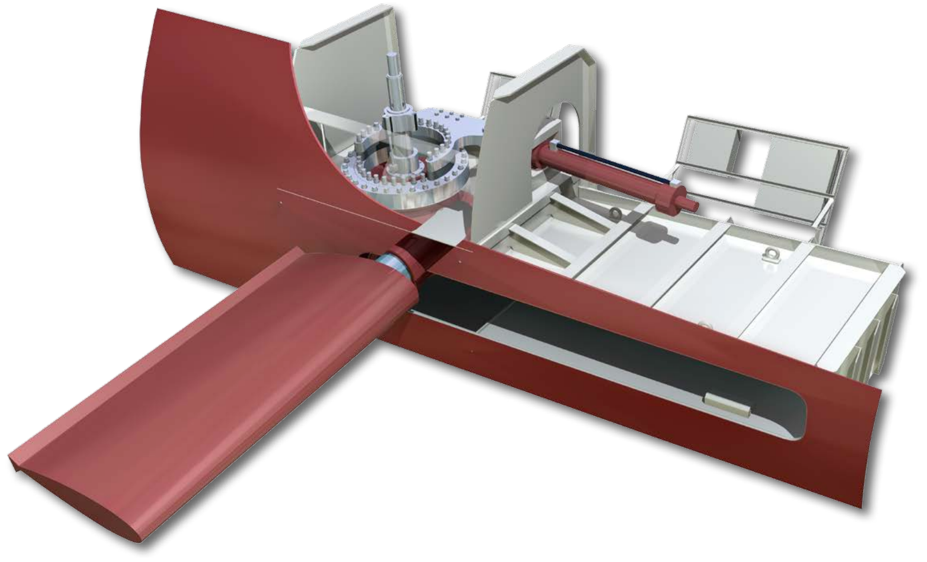

Show tech Stabilization
Similar to a camera stabilizer or Steadicam (right) the projectors for the show would be mounted on the boats for easy access and to not cause any damage to the natural landscape. Today's technology would provide a way to make the projectors able to keep its target projection without moving the image up and down the surface with movement. As talked about above the ship would have its own stabilizer, for guest comfort and location accuracy, and act as the first layer of Defense against projection movement. Much like the image to the right the projector would remain steady with no movement as the surrounding armature makes up for sudden movements and shakiness on the water. Some key lighting equipment would have to be mounted in the same way to maintain accuracy.
Stablizer Example








